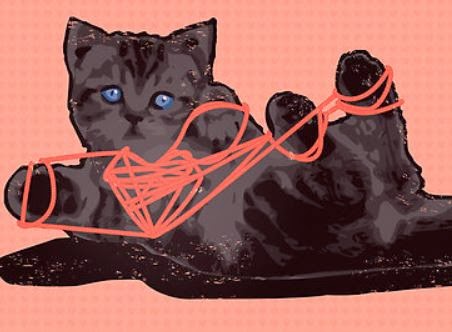I have purposely eliminated the title, scale and legend to show that graphs can automatically describe a story and serve as a basis for analysis and problem solving. This graph would cause you to wonder about the sudden spikes in 2007 and now 2014 (the 2014 data is forecasted).
This graph is actually the Kwh usage for our home (blue line) with a linear trend line for the 10 years of data. A declining line means less electric usage. So what happened in 2007 and what created the trend line down? AND .... what is happening in 2014 (annualized 6 months of data) that is reversing the trend?
The big spike in 2007 relates to one of the hottest summers in Cincinnati history. August alone had 25 days over 90 degrees. The record for total number of days over 90 degrees for the summer (defined as June 1 - August 31) was 1936 (the Dust Bowl) with 64 days (and 12 were above 100). Cincinnati averages 19 days over 90 and 0 over 100. If you want to compare to your city click here ===> http://www.currentresults.com/Weather/US/number-hot-days-cities-summer.php.
This was a call to action and we have put in several big energy saving features - new windows, insulation, roof R30 six inch layer, high efficiency HVAC, which created a steep reduction from 2007 to 2013. This was excellent timing since more hot records were broken:
2010 - 12th warmest summer of all time
2011 - Record 17 consecutive days over 90
So the mystery is what is going on in 2014? Do I have some kind of energy leak?
Stay tuned for the answer. Luckily I can try to solve this before the hot days of August arrive.
Addendum: 7/23/14 "Hottest June on record since 1880" But not in Cincinnati :( The mystery continues.
































